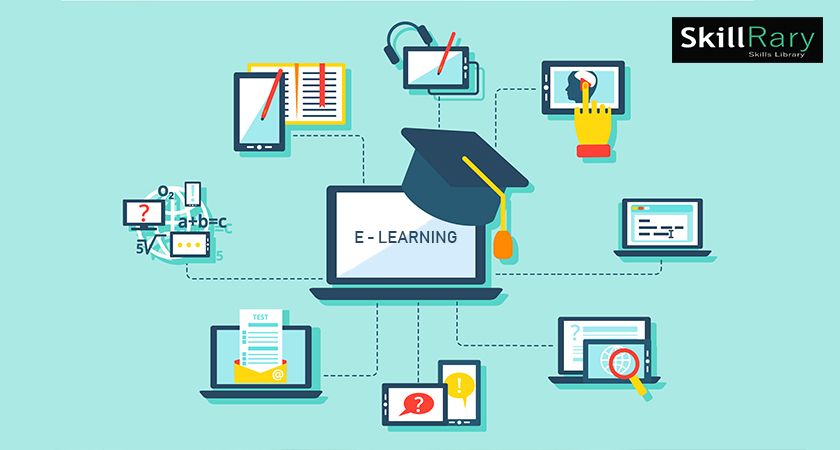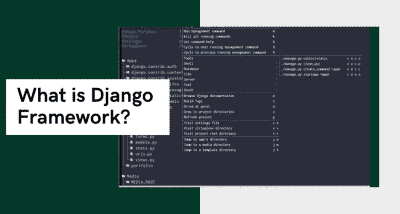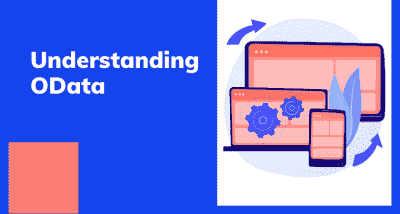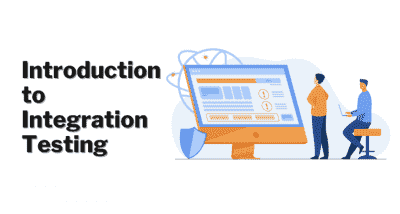E-learning - A Revolution in the World of Education
- Mithun Ashok
- May 28, 2019
- 1 comment(s)
- 9664 Views

Talent and luck might happen to you by chance, but learning is a skill and practice that anyone can accomplish with diligence. Learning is an exercise in changing the self, it keeps the mind young.
There’s so much to learn and often we feel that we will not be able to learn what we want to learn in the time we have. Sometimes the process of learning can get overwhelming too, especially when learning has completely transformed the way in which it is imparted to students. E-Learning has brought a drastic change in the world of traditional chalkboard and classroom method of teaching. It imparts knowledge to global audiences in one go through devices such as desktops, laptops, and mobiles. Today's learners want relevant, mobile, self-paced, and personalized content to learn and the need is fulfilled with the online mode of learning where students can learn at their own comfort and requirement.
DO YOU KNOW?
Traditional educational approaches like colleges and universities, in addition to corporate training departments, are embracing the digital reality – from using online platforms to leveraging AR (augmented reality) and VR (virtual reality) for training. Even for Online Employee Training, there is no shortage of platforms and new technologies.
According to research gathered by Deloitte, the average employee only has time to devote 1% of their work week to professional development. That means only 24 minutes a week or 4.8 minutes a day can be allotted for training in a normal 40-hour work week.
One more survey says that 67% of organizations now offer online learning in some form. 99% of mobile users believe that eLearning has enhanced their experience. The online learning, more specifically them-Learning market is predicted to be a $37.6 billion market by 2020.
As per the forecast by Research and Markets, e-learning will grow to $325 Billion by 2025.
According to a report by Global Industry Analysts Inc., the demand for eLearning to deliver training is growing at 13% every year and will continue at the same pace.
So, it is very much evident that E-Learning is and will be one of the most versatile, booming, emerging and growing trends or product in the world of education.
Different forms of E-Learning:
What makes e-learning so popular? It's versatility. Let’s now look at a few forms of e-learning used to facilitate knowledge transfer.
1. Web-based learning
This form of training is accessed via web browsers or through the corporate Intranet. The best part of this training is that learners can access it at their own pace, within the set time. In addition, they do not need to travel to the training centers to attend the training. The compatibility of web browsers with videos, audios, animation, and other media elements, make it a user-friendly medium to deliver the training. On the flip side, to embrace this learning, the learner needs to meet a certain set of system requirements (additional bandwidth and software).
2. Computer-based training
It is training accessed offline on computers? This type of interactive training worked wonders before the advent of the Internet. It allows learners to learn at their pace and the training progress is tracked by the computer, hence assigning grades instantly. In addition, instructors can also track training progress. It uses various multimedia elements to engage the learner.
3. CD-ROM based learning
This is an obsolete training model where the training material was recorded onto compact disks and accessed on the system without an Internet connection. Today, eLearning has come a long way from CD-ROM to mobile-based learning. However, a few organizations are still using this outdated form of learning to distribute training material.
4. Webinars
A webinar is a training or a workshop delivered over the web using video conferencing software. The best part of this form of training is that you can host a large group, interact and brainstorm, and share applications and documents with the other participants. In simple terms, it mimics the traditional classroom, where you can interact with the instructor and other learners. You can deliver all kinds of training through this form of eLearning. A few of them include product sales training and HR training.
5. Virtual Classroom
It is an online portal through which learners can attend the training right from the comfort of their own place. This is similar to a traditional classroom, but the instructor and learners’ login from different places, virtually. This uses various synchronous technologies such as web conferencing, video conferencing, etc. to enable global learners to attend the training, communicate with each other, and view videos at the same time. Learners do not need to travel to attend the session, thus saving their money and time.
6. Mobile Learning
Mobile learning is a breakthrough in the e-learning world. In this form of learning, the training material is accessed by learners via mobile devices, anywhere anytime with just a few taps. Now, sales reps are able to go through the training material before meeting customers to refresh product knowledge at their pace. Mobile learning also allows employees to collaborate, discuss, and learn with their peers and managers across the globe. Collaborative learning
In this type of training, both the instructor and learners interact and share knowledge, either offline or online. In simple terms, it is a blend of synchronous and asynchronous learning. Employees can gain knowledge and acquire new skills by interactions and employees who could not make it to the online session can participate in online forums, live chats, instant messaging, and use message boards.
7. Video-based Learning
In this mode, training is imparted to end-users via engaging videos. This is ideal to grab the attention of unmotivated learners. Basically, videos with less content and more images glue the audience to their seats throughout the training. This video-based training material can be accessed round the clock from anywhere, thus allowing learners to watch the video as many times as they want and learn at their own pace. A plethora of studies has proven that 80% of people grasp things by seeing them. In fact, it gives a feel of someone guiding the learners. This medium is interactive, engaging, and yields positive learning outcomes
8. Custom eLearning
In this form of e-learning, you can develop courses to suit your content and business requirements. You do not need any license, access the courses with limited system requirements, and gain personalized learning experiences. In simple words, custom e-learning courses are not generic; rather they deliver what learners expect.This addresses the organization’s goals and delivers the content you want your learners to assimilate and retain.
9. Off-the-shelf eLearning
This comprises training material that is already developed and ready to be used by the end-users. The best part of catalog eLearning courses is that they fulfill the urgent training requirement, deliver content in multiple languages, and are cost-effective to train small departments.
The above mentioned are the various eLearning modes. Undeniably, training delivered through any of these forms imprints the essence in the learners’ mind, hence making it productive for organizations.
Let's have an analytical look at the advantages of online learning
1. Accommodates Everyone’s Needs
This the digital revolution has led to remarkable changes in how the content is accessed, consumed, discussed, and shared. Online educational courses can be taken up by office goers and housewives too, at the time that suits them. Depending on their availability and comfort, many people choose to learn at weekends or evenings.
2. Lectures Can Be Taken Any Number Of Times
Unlike classroom teaching, with online learning, you can access the content an unlimited number of times. This is especially required at the time of revision when preparing for an exam. In the traditional form of learning, if you cannot attend the lecture, then you have to prepare for that topic on your own; in eLearning, you can attend the lectures whenever you want with ease.
3. Offers Access to Updated Content
A prime benefit of learning online is that it makes sure that you are in synchronization with modern learners. This enables the learner to access updated content whenever they want it.
4. Quick Delivery of Lessons
ELearning is a way to provide quick delivery of lessons. As compared to traditional classroom teaching method, this mode has relatively quick delivery cycles. This indicates that the time required to learn is reduced to 25%-60% of what is required in traditional learning. There are some of the reasons why the learning time is reduced by eLearning:
- Lessons start quickly and also wrapped up in a single learning session. This enables training programs to easily roll out within a few weeks, or sometimes even days.
- Learners can define their own speed of learning instead of following the speed of the whole group.
- Saves time as a student does not need to travel to the training venue. You can learn at the comfort of your own place.
- Students can choose to study specific and relevant areas of the learning material without focusing on each and every area. For example, they can skip certain areas they do not want to learn.
5. Scalability
ELearning helps in creating and communicating new training, policies, concepts, and ideas. Whether it is for formal education or entertainment, eLearning is a very quick way of learning!
6. Consistency
ELearning enables educators to get a higher degree of coverage to communicate the message in a consistent way for their target audience. This ensures that all learners receive the same type of training with this learning model.
7. Reduced Costs
ELearning is cost-effective as compared to traditional forms of learning? The reason for this price reduction is because learning through this mode happens quickly and easily. A lot of training time is reduced with respect to trainers, travel, course materials, and accommodation.
This cost-effectiveness also helps in enhancing the profitability of an organization. Also, when you are studying at your own place, you are relieved from paying for travel expenses (e.g. accommodation) when training happens in another city/state and/or external learning materials.
8. Effectiveness
ELearning has a positive influence on an organization’s profitability. It makes it easy to grasp the content and digest it: It results in improved scores on certifications, tests, or other types of evaluation. Enhanced ability to learn and implement the new processes or knowledge at the workplace.Help in retaining information for a longer time.
9. Less Impact on the Environment
As eLearning is a paperless way of learning, it protects the environment to a lot of extents. As per a study done on eLearning courses, it has been found that distance-based learning programs consumed around 90% less power and generated 85% less amount of CO2 emissions as compared to traditional campus-based educational courses. With eLearning, there is no need to cut trees for obtaining the paper. Thus, eLearning is a highly eco-friendly way of learning.
In simple words, e-learning has brought the classroom to the learners’ doorstep and has transformed learning simpler, easier and more effective.















April 28, 2020 | Mark Baker